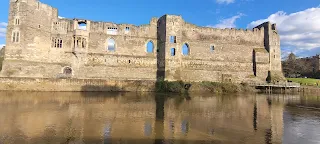"Echoes of History: Newark Castle and the River Trent"
It all began in the 12th century, when Alexander, the Bishop of Lincoln, laid the foundations of this fortress, envisioning a stronghold that would withstand the test of time. Built initially from timber, the castle rose proudly against the skyline, a symbol of strength and power.
Through the centuries, Newark Castle witnessed the ebb and flow of history, its walls echoing the footsteps of kings and conquerors. But it was King John who left his mark upon its storied halls, meeting his end within its confines, legend whispering of a fatal feast of peaches.
Yet, turmoil would come to Newark Castle during the tumultuous years of the English Civil War. Its walls were breached, its towers toppled, as the forces of conflict tore through its defenses. But like a phoenix rising from the ashes, the castle was reborn in the 19th century, restored to its former glory by the hands of Anthony Salvin and the people of Newark.
And as the centuries passed, the River Trent flowed serenely by, a silent witness to the drama unfolding within the castle's walls. From its humble beginnings as a Roman trade route to its role as a vital artery connecting the Midlands to the bustling Humber Estuary, the river played its part in shaping the destiny of the land.
Today, Newark Castle and the River Trent stand as guardians of history, their stories intertwined like the threads of a tapestry. As visitors wander through the castle's ancient corridors and gaze upon the tranquil waters of the river, they are reminded of the enduring legacy of this timeless landscape.










Comments